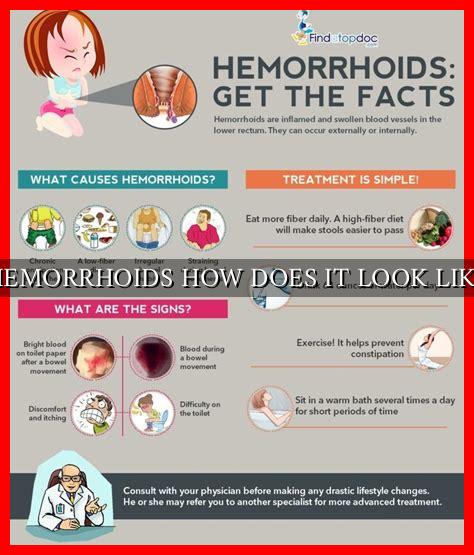-
Table of Contents
HEMORRHOIDS: HOW DO THEY LOOK LIKE
Hemorrhoids, also known as piles, are a common condition that affects millions of people worldwide. They are swollen veins in the rectum and anus that can cause discomfort, pain, and bleeding. Understanding how hemorrhoids look like is essential for early detection and proper treatment. In this article, we will explore the appearance of hemorrhoids, their symptoms, causes, and treatment options.
What Do Hemorrhoids Look Like?
Hemorrhoids can vary in appearance depending on their type and severity. There are two main types of hemorrhoids: internal and external.
Internal Hemorrhoids:
- Internal hemorrhoids are located inside the rectum and are not visible to the naked eye.
- They are typically painless but may cause bleeding during bowel movements.
- Internal hemorrhoids may protrude through the anus and appear as pink, moist bumps.
External Hemorrhoids:
- External hemorrhoids are located under the skin around the anus.
- They can be felt as lumps or bulges around the anal area.
- External hemorrhoids may cause itching, pain, and discomfort.
Symptoms of Hemorrhoids
In addition to their physical appearance, hemorrhoids can cause a range of symptoms, including:
- Bleeding during bowel movements
- Itching or irritation around the anus
- Pain or discomfort, especially during sitting or bowel movements
- Swelling or lumps around the anus
Causes of Hemorrhoids
Hemorrhoids can be caused by a variety of factors, including:
- Straining during bowel movements
- Chronic constipation or diarrhea
- Pregnancy and childbirth
- Obesity
- A sedentary lifestyle
Treatment Options for Hemorrhoids
There are several treatment options available for hemorrhoids, depending on their severity.
. These may include:
- Over-the-counter creams and ointments to reduce pain and swelling
- Warm baths to soothe the affected area
- Increased fiber intake to soften stools and reduce straining
- Minimally invasive procedures such as rubber band ligation or sclerotherapy
- Surgical removal of hemorrhoids in severe cases
It is essential to consult a healthcare provider for an accurate diagnosis and appropriate treatment plan for hemorrhoids.
Conclusion
Understanding how hemorrhoids look like is crucial for early detection and effective management of this common condition. By recognizing the symptoms and causes of hemorrhoids, individuals can take proactive steps to prevent and treat them. If you suspect you have hemorrhoids, seek medical advice promptly to receive the necessary care and support.
For more information on hemorrhoids and their treatment options, visit Mayo Clinic.


